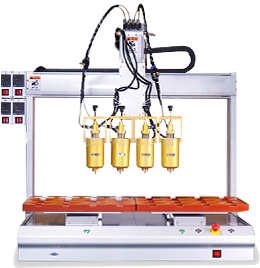-
CN
-
Service Hotline
+8618129931046 Mr. Liao




Technical Features and Core Requirements
1. High Voltage and High Current Carrying Capacity
Voltage Range: The voltage range has leaped from 12V/24V for traditional fuel vehicles to the 400V-800V high-voltage platform for new energy vehicles, with some supercharging models exceeding 1000V.
Current Density: The motor controller must handle instantaneous currents of 200-500A, and the battery management system (BMS) must have over 128 single-cell monitoring channels. Signal acquisition error must be controlled within ±1mV.
Solution:
Thick Copper Foil Technology: Utilizes an ultra-thick copper layer of 3-6OZ (105-210μm), reducing resistance by 60% compared to traditional 1OZ copper foil. A grid copper design and ground vias optimize heat dissipation.
Insulation and Spacing Design: High-voltage line spacing is ≥0.5mm, insulation layer thickness is ≥0.2mm, and a ceramic-filled PTFE substrate (dielectric constant Dk=3.0) is used to enhance high-voltage performance. 2. Reliability in Extreme Environments
Temperature Range: Requires stable operation in extreme temperature fluctuations ranging from -40°C to 150°C (up to 200°C in some areas), such as in the engine compartment's ECU module.
Vibration and Shock Resistance: Vehicle vibration frequencies reach 10-2000Hz and accelerations reach 20G. Mechanical strength must be enhanced through thick-walled plated through-holes (hole copper thickness ≥ 25μm) and red glue fastening components.
Corrosion Resistance and Protection: Requires passing a 1000-hour salt spray test in coastal areas. The battery pack's interior must withstand electrolyte corrosion, utilizing nickel-palladium-gold (ENEPIG) plating and a halogen-free flame-retardant substrate (UL94 V-0 rating). 3. High-Frequency Signals and Electromagnetic Compatibility
Millimeter-Wave Radar: The 77 GHz frequency band requires PCB material dielectric constant (Dk) tolerances ≤ ±0.05 and dissipation factor (Df) < 0.002. Ultra-low-roughness copper foil (surface roughness 0.7 μm RMS) such as Rogers RO3003G2™ is used to optimize signal integrity.
Electromagnetic Interference Suppression: An inner copper foil mesh shield (20 μm thickness) and equal-length differential trace routing (tolerance < ±5%) reduce electromagnetic radiation emissions by 18 dBμV/m, meeting ISO 11452-2 standards.
4. Intelligence and Integration
Multi-chip Integration: The BMS main control chip must integrate an MCU, AFE (analog front end), and communication module. Rigid-flex boards (bending radius ≤ 5 mm) are used to accommodate the complex spatial layout within the battery pack. Embedded technology: IGBT power devices are directly embedded in the PCB, reducing the package volume by 30% and optimizing the heat dissipation path through laser drilling (aperture ≤ 0.15mm).
Automotive new energy PCB (PCBA) is the key hardware carrier that supports the core functions of electric vehicles. Its design and production must meet the three core requirements of high voltage, high current, and reliability in extreme environments, while taking into account the trends of intelligence and lightweighting.